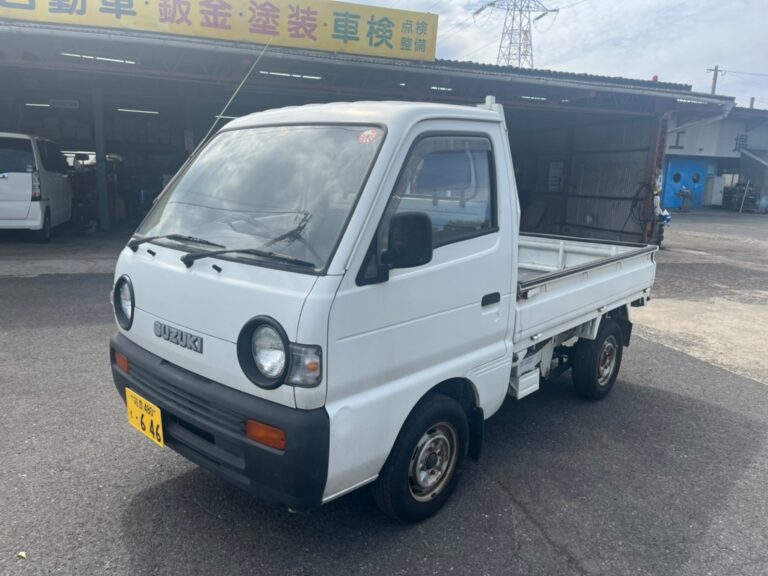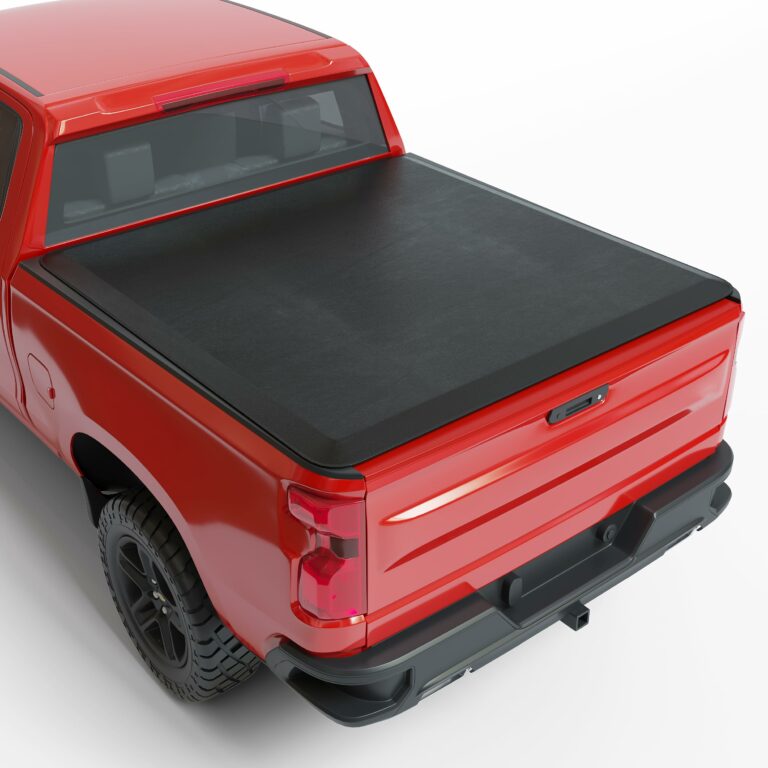Light Duty Pickup Trucks For Sale: Your Comprehensive Guide to Finding the Perfect Hauler
Light Duty Pickup Trucks For Sale: Your Comprehensive Guide to Finding the Perfect Hauler cars.truckstrend.com
Light duty pickup trucks have long been an iconic staple on American roads, evolving from rugged workhorses into versatile vehicles that seamlessly blend utility with everyday comfort and technology. Whether you’re a contractor needing to haul tools, a weekend warrior towing a boat, or simply someone who appreciates the capability and presence of a truck, the market for light duty pickups offers an abundance of choices. This comprehensive guide aims to demystify the process of finding and purchasing the ideal light duty pickup truck, offering insights, practical advice, and essential information to empower your decision.
What Defines a Light Duty Pickup Truck?
Light Duty Pickup Trucks For Sale: Your Comprehensive Guide to Finding the Perfect Hauler
At its core, a light duty pickup truck is classified by its Gross Vehicle Weight Rating (GVWR), which typically falls under 8,500 pounds. This distinguishes them from their medium and heavy duty counterparts (often referred to as 2500/3500 series or larger), which are designed for significantly heavier payloads and towing. Light duty trucks, commonly identified by "1500" or "150" in their model names (e.g., Ford F-150, Chevrolet Silverado 1500, Ram 1500), represent the sweet spot for most consumers. They offer a balance of impressive towing and hauling capabilities with better fuel efficiency, easier maneuverability, and a more car-like ride quality compared to their larger siblings. They are built to handle everyday tasks, from grocery runs to hauling a small trailer, without the bulk or expense of a commercial-grade vehicle.
Why Choose a Light Duty Pickup? The Benefits Unpacked
The enduring popularity of light duty pickups stems from their remarkable versatility and a host of practical advantages:
- Versatility for Work and Play: Need to transport construction materials during the week and camping gear on the weekend? A light duty truck excels at both. Their open beds provide unmatched cargo flexibility, while available towing packages enable them to pull campers, boats, and utility trailers.
- Daily Drivability: Modern light duty trucks offer surprisingly refined rides, comfortable interiors, and advanced infotainment systems. They’re far from the bare-bones work trucks of old, making them suitable for daily commutes and family duties.
- Manageable Size and Fuel Efficiency: Compared to heavy duty trucks, light duty models are easier to park, navigate city streets, and generally consume less fuel. While they won’t win any efficiency awards against sedans, their improvements in this area are significant.
- Lower Initial Cost and Maintenance: Generally, light duty trucks are more affordable to purchase and maintain than their heavy duty counterparts, making them a more accessible option for a wider range of buyers.
- Strong Resale Value: Pickups, especially popular light duty models, tend to hold their value exceptionally well, offering a good return on investment when it’s time to sell or trade in.
- Advanced Safety and Technology: Equipped with modern safety features like adaptive cruise control, lane-keeping assist, and blind-spot monitoring, alongside connectivity options like Apple CarPlay/Android Auto, today’s light duty trucks are as safe and tech-savvy as many luxury vehicles.

Key Factors When Buying a Light Duty Pickup Truck
Navigating the light duty truck market requires careful consideration of several factors to ensure you select a vehicle that perfectly matches your needs and budget.

1. New vs. Used: The Perennial Debate
- New Trucks: Offer the latest technology, full factory warranty, and customization options. They come with peace of mind but typically involve a higher initial investment and immediate depreciation.
- Used Trucks: Can offer significant savings, especially for models a few years old. Depreciation has already occurred, and you might get more features for your money. However, they come with less warranty coverage (or none) and require thorough inspection.

2. Budget and Financing
Beyond the sticker price, consider insurance, fuel costs, maintenance, and potential accessories. Secure pre-approved financing to understand your limits and strengthen your negotiating position.
3. Usage and Purpose
How will you primarily use the truck?
- Daily Commuting/Light Hauling: Focus on fuel efficiency, comfort, and technology.
- Towing/Heavy Hauling: Prioritize engine power, towing capacity, payload rating, and integrated trailer tech.
- Off-Roading: Look for 4×4, higher ground clearance, skid plates, and off-road specific suspension packages.
4. Engine Type and Drivetrain
- Engines: Options typically include V6 (often turbocharged for efficiency and power), V8 (for maximum power and towing), and sometimes diesel (for torque and fuel economy, though less common in light duty). Match the engine to your expected workload.
- Drivetrain: Choose between 2WD (more fuel-efficient, cheaper) or 4WD/AWD (essential for off-roading, snow, or slippery conditions).
5. Cab Configuration and Bed Length
- Cab Types:
- Regular Cab: Two doors, seating for 2-3, longest available beds. Best for pure utility.
- Extended Cab (Quad Cab/Double Cab): Four doors (rear doors often smaller), seating for 4-5. A compromise between passenger space and bed length.
- Crew Cab: Four full-size doors, spacious rear seating for 5-6 adults. Most popular for families, but often paired with shorter beds.
- Bed Lengths: Vary from 5.5 feet (short bed, common on crew cabs) to 8 feet (long bed, common on regular cabs). Your cargo needs will dictate the ideal length.
6. Features and Technology
Modern trucks offer a plethora of features: touchscreen infotainment, navigation, premium audio, heated/ventilated seats, power outlets, advanced driver-assistance systems (ADAS), and integrated trailer brake controllers. Prioritize what’s essential for your lifestyle.
7. Towing and Payload Capacity
These are critical numbers if you plan to haul heavy loads. Always check the specific truck’s rating (found on the door jamb sticker) and never exceed it. Remember, payload includes passengers and cargo in the truck, not just in the bed.
Popular Light Duty Pickup Models on the Market
The light duty segment is dominated by a few key players, each offering a range of trims and capabilities:
- Ford F-150: Consistently America’s best-selling vehicle for decades, known for its aluminum body, diverse engine options (including a hybrid), and Pro Power Onboard generator.
- Chevrolet Silverado 1500: A strong contender with robust V8 options, a comfortable ride, and innovative bed features like the Multi-Flex tailgate.
- Ram 1500: Renowned for its luxurious interiors, class-leading ride quality (thanks to available air suspension), and innovative storage solutions like RamBox.
- Toyota Tundra: Known for its legendary reliability and powerful V6 engine options (including hybrid), offering a compelling blend of capability and Japanese engineering.
- Nissan Titan: A solid, often overlooked option offering strong V8 power and a comfortable cabin, frequently available at competitive prices.
The Buying Process: A Step-by-Step Guide
- Research: Use online resources, reviews, and forums to narrow down models that fit your criteria.
- Budgeting: Determine your maximum expenditure, including the truck’s price, taxes, fees, and insurance.
- Test Drive: Drive multiple models and trim levels. Pay attention to comfort, handling, visibility, and how it feels on different road types. If you plan to tow, try to test drive with a trailer.
- Inspection (Used Trucks): For used vehicles, a pre-purchase inspection by an independent mechanic is highly recommended to uncover any hidden issues. Review the vehicle history report (CarFax, AutoCheck).
- Negotiation: Be prepared to negotiate the price. Research average selling prices in your area. Don’t forget to negotiate trade-in value separately.
- Financing and Insurance: Secure your financing (or confirm dealer financing) and arrange insurance before taking ownership.
- Paperwork: Read all contracts carefully before signing. Understand warranty details, service plans, and any extended coverage.
Maintenance and Ownership Tips
Owning a light duty pickup means taking care of a capable machine:
- Regular Servicing: Follow the manufacturer’s recommended maintenance schedule for oil changes, tire rotations, fluid checks, and filter replacements.
- Tire Care: Proper tire pressure is crucial for safety, fuel economy, and tire longevity, especially when hauling or towing.
- Understand Load Limits: Always stay within the truck’s Gross Vehicle Weight Rating (GVWR) and Gross Combined Weight Rating (GCWR) to prevent damage and ensure safety.
- Towing Best Practices: Use proper hitches, distribute weight correctly, and adjust driving habits when towing. Consider trailer brake controllers for larger loads.
- Rust Prevention: If you live in a region with road salt, regular undercarriage washes can help prevent rust.
Challenges and Solutions
While versatile, light duty trucks do present some challenges:
- Fuel Costs: Despite improvements, trucks generally consume more fuel than smaller vehicles.
- Solution: Consider hybrid or diesel options, drive conservatively, and perform regular maintenance.
- Parking: Their size can make parking in crowded lots challenging.
- Solution: Utilize parking assist features, practice reverse parking, and choose models with good visibility or surround-view cameras.
- Depreciation: While strong, new trucks still depreciate.
- Solution: Consider buying a certified pre-owned (CPO) truck, or a slightly used model to let the initial depreciation hit someone else. Proper maintenance also helps maintain resale value.
Light Duty Pickup Trucks For Sale: Representative Price and Specification Overview
This table provides a representative overview of popular light duty pickup trucks. Prices and specifications can vary significantly based on trim level, engine choice, optional features, condition (for used), mileage, and region. Always consult current manufacturer websites and local dealerships for the most accurate and up-to-date information.
| Model | Starting New MSRP (Est.) | Used Price Range (3-5 yrs old, Est.) | Typical Engine Options | Max Towing Capacity (Est.) | Est. Combined MPG (Typical) | Key Feature/Notes |
|---|---|---|---|---|---|---|
| Ford F-150 | $36,000 – $85,000+ | $25,000 – $60,000+ | 2.7L EcoBoost V6, 3.5L EcoBoost V6, 5.0L V8, 3.5L PowerBoost Hybrid | 13,500 lbs | 18-25 MPG | Aluminum body, Pro Power Onboard, diverse powertrains |
| Chevy Silverado 1500 | $37,000 – $80,000+ | $26,000 – $58,000+ | 2.7L Turbo, 5.3L V8, 6.2L V8, 3.0L Duramax Diesel | 13,300 lbs | 17-26 MPG | Multi-Flex Tailgate, comfortable ride, strong V8s |
| Ram 1500 | $39,000 – $85,000+ | $28,000 – $62,000+ | 3.6L V6 eTorque, 5.7L V8 eTorque, 3.0L EcoDiesel | 12,750 lbs | 18-26 MPG | Class-leading interior, coil-spring suspension, RamBox |
| Toyota Tundra | $42,000 – $75,000+ | $30,000 – $55,000+ | 3.4L Twin-Turbo V6, i-FORCE MAX Hybrid V6 | 12,000 lbs | 18-22 MPG | Legendary reliability, strong standard engine |
| Nissan Titan | $45,000 – $65,000+ | $20,000 – $40,000+ | 5.6L V8 | 11,033 lbs | 17-18 MPG | Powerful standard V8, comfortable, strong warranty |
Note: Max Towing Capacity figures are for properly equipped trucks and can vary significantly by configuration. MPG estimates are combined city/highway for typical configurations and will vary with driving conditions.
Frequently Asked Questions (FAQ) About Light Duty Pickup Trucks
Q1: What is the main difference between a light duty and a heavy duty truck?
A1: The primary difference lies in their Gross Vehicle Weight Rating (GVWR) and intended purpose. Light duty trucks (e.g., F-150, Silverado 1500) have a GVWR typically under 8,500 lbs and are designed for everyday use, moderate towing, and hauling. Heavy duty trucks (e.g., F-250/350, Silverado 2500/3500) have much higher GVWRs (often 8,500 lbs to over 14,000 lbs) and are built for commercial-grade towing, very heavy payloads, and more extreme work applications.
Q2: Can a light duty truck really tow a significant amount?
A2: Absolutely! Modern light duty trucks are incredibly capable. Many popular models can tow well over 10,000 pounds when properly equipped, which is more than enough for most recreational trailers, boats, or even small construction equipment. Always check the specific truck’s tow rating.
Q3: What does "GVWR" mean and why is it important?
A3: GVWR stands for Gross Vehicle Weight Rating. It’s the maximum permissible total weight of a vehicle, including the vehicle itself, its passengers, and all cargo. It’s crucial because exceeding the GVWR can compromise safety, handling, braking, and may void your warranty or lead to fines.
Q4: Is it better to buy a new or used light duty truck?
A4: It depends on your budget and priorities. New trucks offer the latest features, full warranty, and customization. Used trucks are more affordable, have already absorbed the initial depreciation, and offer great value. For used, always get a pre-purchase inspection.
Q5: What’s a good mileage for a used light duty truck?
A5: For a used truck, "good mileage" depends on its age and maintenance history. Generally, trucks with 15,000-20,000 miles per year are considered typical. A well-maintained truck can last well over 200,000 miles. Focus more on consistent maintenance records than just the odometer reading.
Q6: Which light duty truck is the "best"?
A6: There’s no single "best" truck; it largely depends on individual needs and preferences. The Ford F-150, Chevy Silverado 1500, and Ram 1500 consistently rank high for different reasons (e.g., F-150 for innovation, Silverado for traditional capability, Ram for luxury). Consider your primary use, budget, desired features, and test drive thoroughly to find the best fit for you.
Conclusion
The market for light duty pickup trucks for sale is vibrant and diverse, offering an unparalleled combination of utility, comfort, and advanced technology. From the contractor needing a reliable work partner to the family seeking adventure on the weekends, there’s a light duty truck designed to meet nearly every demand. By understanding the key features, asking the right questions, and following a structured buying process, you can confidently navigate the options and drive home in a vehicle that serves your needs for years to come. With proper research and a clear understanding of your requirements, your ideal light duty pickup truck is waiting.





